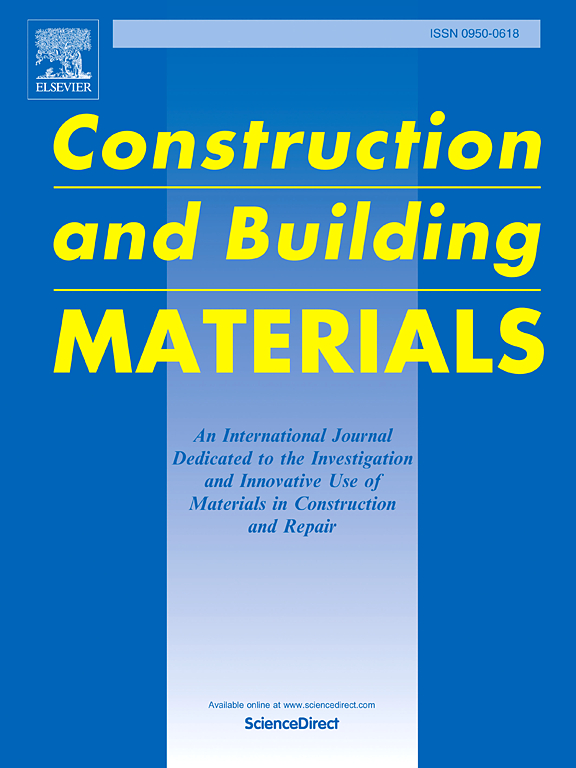In-situ generation of silicon carbide whisker to enhance service performance of silicon carbide reticulated porous filter using a replica template method and novel carbon-silicon microspheres
IF 7.4
1区 工程技术
Q1 CONSTRUCTION & BUILDING TECHNOLOGY
引用次数: 0
Abstract
Silicon carbide reticulated porous filters are widely used in steel and alloy smelting industries. However, the hollow voids and microcracks in the ceramic skeletons, caused by the burnout of polymer templates, negatively impact the strength, thermal shock resistance, and corrosion resistance of the filters. In this study, the replica template method was employed with slurries containing novel carbon-silicon microspheres to reconstruct the microstructure of the silicon carbide skeleton and enhance the performance of the filters. The incorporation of carbon-silicon microspheres significantly improved the flowability and structural reconstruction ability of the slurry, resulting in a more homogeneous coating layer within the template. After sintering at 1550°C, silicon carbide whiskers were in-situ generated within the hollow voids, microcracks, and on the surface of the silicon carbide skeleton, thereby improving compressive strength and thermal shock resistance. Additionally, the poor wettability between the sample and molten copper enhances the fluidity of the copper solution within the filter, effectively preventing it from adhering to the ceramic filter. This reduces the risk of blockage and minimizes the potential for corrosion of the ceramic filter by the molten copper.
利用复制模板法和新型碳硅微球原位生成碳化硅晶须,提高碳化硅网状多孔过滤器的使用性能
碳化硅网状多孔过滤器广泛应用于钢铁和合金冶炼行业。然而,由于聚合物模板的烧坏,陶瓷骨架中出现了空洞和微裂纹,对过滤器的强度、抗热震性和耐腐蚀性产生了负面影响。在本研究中,采用复制模板的方法,在含有新型碳硅微球的浆料中重建碳化硅骨架的微观结构,提高过滤器的性能。碳硅微球的掺入显著提高了浆料的流动性和结构重建能力,使模板内的涂层更加均匀。在1550℃烧结后,碳化硅晶须在空心孔洞内、微裂纹内和碳化硅骨架表面原位生成,从而提高了抗压强度和抗热震性。此外,样品与熔融铜之间较差的润湿性增强了过滤器内铜溶液的流动性,有效地防止了铜溶液粘附在陶瓷过滤器上。这降低了堵塞的风险,并最大限度地减少了熔融铜腐蚀陶瓷过滤器的可能性。
本文章由计算机程序翻译,如有差异,请以英文原文为准。
求助全文
约1分钟内获得全文
求助全文
来源期刊

Construction and Building Materials
工程技术-材料科学:综合
CiteScore
13.80
自引率
21.60%
发文量
3632
审稿时长
82 days
期刊介绍:
Construction and Building Materials offers an international platform for sharing innovative and original research and development in the realm of construction and building materials, along with their practical applications in new projects and repair practices. The journal publishes a diverse array of pioneering research and application papers, detailing laboratory investigations and, to a limited extent, numerical analyses or reports on full-scale projects. Multi-part papers are discouraged.
Additionally, Construction and Building Materials features comprehensive case studies and insightful review articles that contribute to new insights in the field. Our focus is on papers related to construction materials, excluding those on structural engineering, geotechnics, and unbound highway layers. Covered materials and technologies encompass cement, concrete reinforcement, bricks and mortars, additives, corrosion technology, ceramics, timber, steel, polymers, glass fibers, recycled materials, bamboo, rammed earth, non-conventional building materials, bituminous materials, and applications in railway materials.
 求助内容:
求助内容: 应助结果提醒方式:
应助结果提醒方式:


